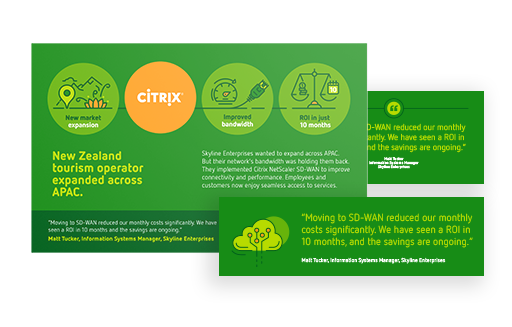.jpg?width=804&height=452&name=_W4U%20Advohub%20social%20promo%20templates%20(4).jpg)
In the previous article, we learned about the importance of creating a solid customer-centric culture in order to maximize the potential of your Customer Advocacy Program, and we anticipate that the role of the board of directors in this cultural change is substantial.
In this article, we will explore two main topics: on the one hand, why the board's role is crucial when talking about change management, and on the other hand, how to gain their support to ensure that the entire organization focuses on adopting a customer-centric culture.
Let's begin!
Why is the board's role crucial when talking about change management?
An exception from some individual successes, change remains difficult to pull off, and only some companies manage the process as well as they would like. According to Harvard Business Review, 70% of all change initiatives fail, and most of those failures result from a lack of understanding from the board about the nature and process of corporate change.
Top management plays a crucial role in any cultural transformation because they model the desired behavior. They must be the live example of customer centricity, making decisions that reflect that approach. Of course, clear and constant communication with all the collaborators about putting the Customer at the center of any decision is important, but aligning what they say with what they do is more relevant.
The board needs to show they believe in this change. How?
- Prioritizing the initiatives that improve customer satisfaction
- Participating actively and directly in customer-centric projects.
- Adapting the organization chart, creating new roles dedicated to experience management and customer advocacy.
- Assigning a significant part of the total budget to customer-centric projects to guarantee they have all the resources needed.
- Adjusting compensation systems and recognition prizes to customer-centric behavior.
- Celebrating the achievements regarding customer satisfaction improvement.
- Defining specific metrics to measure the success of the culture transformation.
- Tying goals to customer satisfaction, loyalty, and growth indicators.
- Investing in employees' training and development.
- Integrating customer feedback into their own decision-making.
- Showing a long-term commitment to change management.
The board of directors must lead by example and show coherence in adopting a customer-centric culture in every business unit across the organization. This aim requires tangible change in the decision-making, the organization chart and budgets, and last but not least, clear communication with consistent actions.
How do you gain top management support?
Boards of directors are responsible for the company's long-term interest; their role is to define the organization's mission and objective. In the absence of support from the board, nothing will change since it is the board that establishes and governs the strategy. As its main aim is to make decisions to ensure the future and durability of an organization, your great challenge is to speak the same language, the language of the business.
This involves showing them what financial results the organization could obtain by adopting a customer-focused culture and how it contributes to consolidating a sustainable, competitive, and sustainable business. Here are some tips that you cannot leave out of your presentation if you want to gain the support of the board:
1. Profitability and ROI
Highlight studies demonstrating that customer-focused companies outperform those not customer-focused in profitability. As we told you in the previous article, Deloitte research found that customer-centric companies are 60% more profitable than companies that are not Customer-focused. Here you have another insight:
With over a decade of customer experience and stock performance data analyzed, Watermark Consult did a study in which they found that providing a really poor experience has a penalty paid. The worst-rated companies in customer experience delivered a total shareholder return less than half that of the S&P 500 Market Index.
2. Financial indicators
Use metrics like Customer Lifecycle Value (CLV) to show how strong, loyal customer relationships translate into long-term revenue. Calculate the average spent by a promoter client compared to a detractor client.
Finally, remember to mention that customer retention and loyalty directly impact the company's financial stability. Increasing customer retention rates by 5% increases profits by 25% to 95%.
3. Success stories
Exemplify the importance of adopting a customer-centric culture with real cases from world-known brands. Here are some examples:
- Amazon has maintained a relentless focus on customer satisfaction, which has contributed to its success and consistent growth.
- Apple is a case in point, focusing on user experience, leading to exceptional customer loyalty and strong profit margins.
- Zappos is known for its customer-centric culture, providing memorable service that results in loyalty and growth.
4. Importance in the business environment
Market trends sooner or later force us to adopt a customer-centric culture to remain competitive. We are facing a super connected and informed consumer with access to hundreds of online reviews at their fingertips, making them a more demanding and empowered customer.
The market moves in an increasingly agile and volatile environment. Adopting a customer-focused culture allows us to anticipate the new needs of our customers, adapt our products and services to them, and even innovate.
Conclusion
In short, putting the Customer at the center not only improves satisfaction but also directly impacts the financial health of the company and its position in the market. Investing in a customer-centric culture is essential for long-term success.
Now you need to get that meeting and convince them all!







